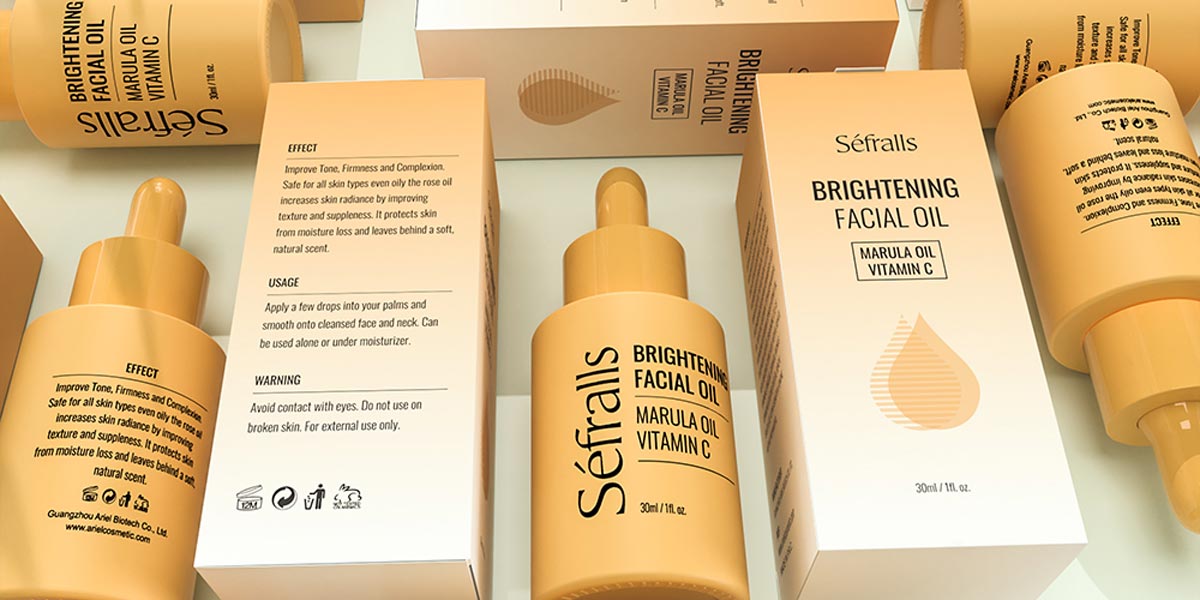In the last few months, we have discussed the differences, advantages, and disadvantages of various business models such as OEM, ODM, and proprietary brands. These terms frequently appear in the manufacturing industry and play a crucial role in formulating business strategies. Whether pursuing highly customized products or seeking to establish private brands in the market, companies must delve into these concepts to devise strategies that best align with their development needs. In today’s article, our focus is primarily on a detailed exploration of the concepts of private brands and white-labeling brands, examining their roles and advantages in the modern business environment. By analyzing these two business models, we aim to help companies understand the choices they face in formulating product strategies, comprehend the strengths and weaknesses of both, and explore how they can stand out in the market competition. We hope this article can assist entrepreneurs with specific needs!
The definitions of white label and private brands
1.White Label:
The term “white label” is commonly used to describe a business model, also known as “white labeling” or “private labeling.” White label refers to products or services produced by one company and purchased by other companies or brands for resale under their brand. This means that the manufacturer of the product (white label company) supplies it to other companies, which can repackage, rebrand, and sell it under their name. This business model allows the brand owner (company purchasing white label products) to introduce products to the market without taking on the responsibilities of product design, manufacturing, and supply chain management. White-label products are typically existing standardized products that the brand can package, position, and market according to its needs.
The white labeling model is often used to reduce market entry barriers and production costs. White label companies focus on product manufacturing and supply chain management, while sales channels, brand promotion, and marketing are handled by the company purchasing white label products. This collaborative model enables companies without manufacturing capabilities or those unwilling to engage in production to launch products under their brand without building an entire supply chain from scratch.
2.Private Label:
“Private Label” refers to a product independently designed, manufactured, promoted, and sold by a company or retailer. This means that the company has complete control over the product, with responsibilities ranging from design and production to market promotion and sales falling under its purview. Proprietary brands typically represent a company’s core business and embody its unique brand image, values, and product positioning. Unlike white-label products or OEM (Original Equipment Manufacturer) models, where companies purchase ready-made products and add their branding, proprietary brands represent the company’s deep involvement in the entire product lifecycle, providing more control and flexibility. Successful proprietary brands contribute to building brand loyalty, enhancing the company’s competitiveness in the market.
The similarities between white label and private label
White label and private label are two distinct business models, but they share some similarities, especially in product sales. Here are some points of similarity between them:
1. Seller Controls Brand Identity: Whether it’s a white label or private label, sellers have the authority to control the brand identity of the product. White label products may have the seller’s brand logo added on the basis provided by the manufacturer, while private label products are entirely determined by the seller.
2. Brand Positioning and Marketing: Regardless of white label or private label, sellers need to decide on the product’s positioning and how to promote it in the market. This includes identifying the target audience, devising market strategies, and executing marketing plans.
3. Customer Relationship Management: Both white label and private label sellers need to establish and maintain good relationships with customers. This involves providing customer service, addressing issues, and collecting feedback.
4. Channel Selection: Whether it’s white label or private label, sellers must choose the appropriate sales channels to ensure the product reaches the target audience. This may include online retail, brick-and-mortar stores, wholesale, and other channels.
5. Product Pricing: Both white label and private label require the development of suitable product pricing strategies to ensure competitiveness in the market and profitability.
While these similarities exist, the key difference between white label and private label lies in the manufacturing and design aspects of the product. Private label companies have more control over the design, manufacturing, and brand building of the product. In contrast, white label companies typically focus more on production, leaving the responsibility of sales and marketing to the brand owner.
Difference between white label and private label
Private label and white label are two distinct product positioning and market strategy approaches, and there are clear differences between them:
1. Brand Ownership:
Private Label: Companies develop, own, and manage their own brand, typically selling products under the company’s unique logo and name. The private label emphasizes building a unique brand image and providing a distinct value proposition.
White Label: White label products are manufactured by one company but sold under the brand of another company. In this case, the manufacturer provides the product, while the selling company is responsible for promoting and selling the brand.
2. Product Uniqueness:
Private Label: Companies produce unique products through in-house research and development or exclusive design to meet specific market demands. Products often feature unique characteristics, designs, or functionalities.
White Label: White label products are usually produced by manufacturers based on the ordering party’s requirements and are often standardized products that may be sold under multiple brands.
3. Quality Control:
Private Label: Private label products typically emphasize strict control over product quality to ensure alignment with the company’s standards and values.
White Label: Quality control for white label products is the responsibility of the manufacturer, with limited control granted to the selling company.
4. Market Positioning:
Private Label: Companies establish a unique market positioning through their brand, striving to gain a competitive advantage in the market.
White Label: White label products are often produced to meet specific market demands, and the selling company’s goal is to gain market share through brand promotion and sales.
5. Brand Loyalty:
Private Label: Due to uniqueness and brand image, private label products often find it easier to establish brand loyalty, as consumers tend to prefer familiar brands.
White Label: White label products may lack the brand loyalty associated with private labels, as consumers may focus more on the product itself rather than the selling brand.
Examples of private label and white label
1. Private Label
Choosing the private label model is often suitable for specific situations and strategic goals. If you have the following conditions, opting for the private label model can help you better establish your brand advantage: building brand uniqueness, controlling product quality, meeting specific market demands, establishing brand loyalty, increasing profit margins, and reinforcing corporate positioning. Some commonly seen private label brands include:
Clinique: Clinique, belonging to the Estée Lauder family, offers skincare, makeup, and fragrance products. Clinique is renowned for its expertise in skincare technology, offering various skincare serums, moisturizers, and cleansing products.
Kiehl’s: Kiehl’s is a skincare brand originating from New York, known for its use of natural ingredients and distinctive packaging. Its product line includes facial care, body care, and hair care products.
L’Oréal: L’Oréal is an international beauty and cosmetics company with numerous private label brands, such as L’Oréal Paris and Maybelline.
2.White Label
The White Label is common in many industries, including electronics, food and beverages, cosmetics, and more. Through white-labeling, companies can flexibly introduce new products, reduce risks, and enter the market quickly. If you are planning to create your own brand but don’t know where to start, choosing the white label might be wise if you have the following conditions: being a startup or a newcomer, limited funds and resources, aiming for a quick market entry, testing the feasibility of a product, and focusing on sales and marketing. In daily life, we often encounter white-label products, such as:
AmazonBasics: Amazon’s AmazonBasics is a white-label brand offering a variety of household items, electronics, and office supplies, emphasizing affordability and basic functionality.
Some emerging online beauty brands: They might use white label products to launch their own brands more quickly.
Advantages and disadvantages of white label
The white-labeling model comes with several advantages.
Firstly, it enables the brand to swiftly enter the market without the need for significant resources for product research and development.
Secondly, white-label products typically have lower production costs as manufacturers have already achieved cost efficiency through large-scale production.
Additionally, the brand can focus on market promotion, sales channels, and brand building without getting overly involved in the details of product manufacturing. However, white-label products also face some disadvantages, one of which is a lack of uniqueness. Since these products are often standardized, it can be challenging for the brand to differentiate itself from competitors in the market. Moreover, there is a high demand for quality control and supply chain management from the manufacturer to ensure that the final product aligns with the brand’s quality standards. In summary, white-label products represent a flexible business model suitable for companies aiming to rapidly launch their own branded products while avoiding the complete manufacturing responsibility.
Advantages and disadvantages of private label
Private labeling, as a business model, comes with its unique advantages and disadvantages. Here are some of the advantages of private labeling:
Advantages:
Brand Control: Private labeling empowers companies with greater control over product design, manufacturing, and brand image, allowing for the creation of a unique corporate identity. Its advantages include building brand loyalty, better control of the supply chain, achieving higher profit margins, and forming a distinct competitive position in the market.
Profit Potential: Private labels often enjoy higher profit margins as companies have direct control over the manufacturing and sales processes, eliminating the need to pay fees to third-party manufacturers.
Brand Loyalty: Private labels contribute to establishing deeper connections with consumers, enhancing brand loyalty, as consumers find it easier to form emotional connections with brands that have a unique identity.
Supply Chain Control: Private labeling enables companies to better control the entire supply chain, aiding in ensuring product quality and production efficiency.
Disadvantages:
High Costs: Private labels typically require higher startup costs, including investments in research and development, production facilities, marketing, and brand promotion.
Risk Exposure: Having control over the entire product lifecycle also means taking on more business risks, including market risks and product quality risks.
Time-Consuming: Building a private label takes time, including product development, market promotion, and brand building. This might make it challenging for companies to establish themselves quickly in the market.
Competition Pressure: In some industries, competing with well-established, renowned brands can be more intense for private labels. They need to put in more effort to attract consumers.
Market Recognition: Initially, private labels may face issues of low market recognition as consumers may be more inclined to purchase products from well-known brands.
In summary, white label and private label represent distinct business models, each with its unique advantages and disadvantages. White label products offer a more flexible choice by facilitating rapid market entry and reducing risks and costs. On the other hand, private labels, through comprehensive control over product design, production, and brand image, create deeper brand loyalty and higher profit potential. In various markets and industries, both white label and private label have seen successful cases. The key lies in a company’s ability to effectively integrate resources, formulate suitable strategies, and adapt to market changes. Ultimately, whether white label or private label, both showcase the diversity and innovative spirit in the business realm, providing consumers with richer choices. In this fiercely competitive business environment, understanding the advantages and challenges of these two models will help companies better respond to market fluctuations and meet consumer needs. If you like our articles, feel free to give us a thumbs up and share it with friends who might find it helpful. If you still have questions or other things want to consult, please leave us your messages!




